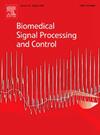Type 2 diabetes mellitus associated pancreatic cancer prediction using combinations of machine learning models
IF 4.9
2区 医学
Q1 ENGINEERING, BIOMEDICAL
引用次数: 0
Abstract
Background
Type 2 Diabetes Mellitus (T2DM) patients face an increased risk of developing pancreatic cancer (PaC), with studies reporting relative risk of 1.94 (confidence interval 1.66–2.27). Our goal was to identify multiple T2DM-PaC comorbidity genes and develop machine learning (ML) models for predicting T2DM-PaC comorbidity using transcriptomics gene expression datasets from blood.
Methods
Comorbidity genes from literature were extracted using Natural language processing. Using publicly available T2DM-PaC gene expression datasets we extracted differentially expressed genes, hub genes of co-expressed modules in weighted gene correlation network analysis, and highly perturbed genes from pathway simulations. We explored a wide range of ten ML algorithms spanning Linear Classifiers, Tree-Based Methods, Gradient Boosting Methods, and Naive Bayes Classifiers and different combinations of algorithm. For T2DM-PaC comorbidity prediction we constructed two different ML models one for T2DM and other for PaC, using T2DM-PaC comorbidity features.
Results
Sixty-seven T2DM-PaC comorbidity genes features were identified in total, among these ATM genes are already used in PaC diagnosis. In the T2DM model, the Logistic Regression Classifier-Support Vector Machine combination achieved an F1 score of 0.80 and Matthews Correlation Coefficient (MCC) of 0.65. In the PaC model, the Guassian Naive Bayes-eXtreme Gradient Boosting combination had an F1 score of 0.96 and MCC of 0.94. The T2DM-PaC ensemble model tested on a T2DM-PaC comorbidity dataset had an F1 score of 0.89 and MCC of 0.77.
Conclusion
Built ensemble ML models could identify T2DM-PaC comorbidity with 89 % accuracy. These ML models could aid in screening for PaC in T2DM patients and are available at https://github.com/suroseth/T2DM-PaC_comorbidity_predictor.

结合机器学习模型预测2型糖尿病相关胰腺癌
背景2型糖尿病(T2DM)患者发展为胰腺癌(PaC)的风险增加,研究报告的相对危险度为1.94(置信区间1.66-2.27)。我们的目标是识别多个T2DM-PaC合并症基因,并利用血液转录组学基因表达数据集开发预测T2DM-PaC合并症的机器学习(ML)模型。方法采用自然语言处理技术提取文献中的共病基因。利用公开的T2DM-PaC基因表达数据集,我们提取了差异表达基因,加权基因相关网络分析中共表达模块的枢纽基因,以及途径模拟中高度扰动的基因。我们探索了十种ML算法,包括线性分类器、基于树的方法、梯度增强方法和朴素贝叶斯分类器以及算法的不同组合。为了预测T2DM-PaC合并症,我们利用T2DM-PaC合并症的特征,构建了两种不同的ML模型,一种用于T2DM,另一种用于PaC。结果共鉴定出67个T2DM-PaC合并症基因特征,其中ATM基因已用于PaC诊断。在T2DM模型中,Logistic回归分类器-支持向量机组合的F1得分为0.80,Matthews相关系数(MCC)为0.65。在PaC模型中,高斯朴素贝叶斯-极端梯度增强组合的F1得分为0.96,MCC得分为0.94。T2DM-PaC合并症数据集测试的T2DM-PaC整体模型F1得分为0.89,MCC为0.77。结论所建立的整体ML模型可识别T2DM-PaC合并症,准确率达89%。这些ML模型可以帮助筛查T2DM患者的PaC,可在https://github.com/suroseth/T2DM-PaC_comorbidity_predictor上获得。
本文章由计算机程序翻译,如有差异,请以英文原文为准。
求助全文
约1分钟内获得全文
求助全文
来源期刊

Biomedical Signal Processing and Control
工程技术-工程:生物医学
CiteScore
9.80
自引率
13.70%
发文量
822
审稿时长
4 months
期刊介绍:
Biomedical Signal Processing and Control aims to provide a cross-disciplinary international forum for the interchange of information on research in the measurement and analysis of signals and images in clinical medicine and the biological sciences. Emphasis is placed on contributions dealing with the practical, applications-led research on the use of methods and devices in clinical diagnosis, patient monitoring and management.
Biomedical Signal Processing and Control reflects the main areas in which these methods are being used and developed at the interface of both engineering and clinical science. The scope of the journal is defined to include relevant review papers, technical notes, short communications and letters. Tutorial papers and special issues will also be published.
 求助内容:
求助内容: 应助结果提醒方式:
应助结果提醒方式:


